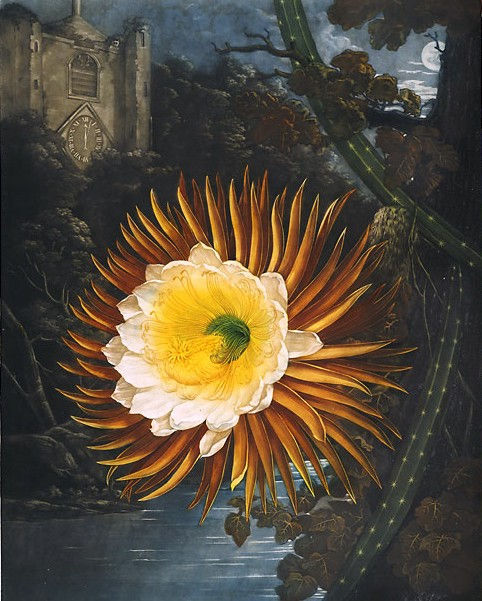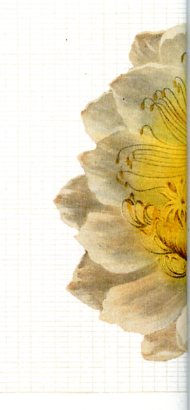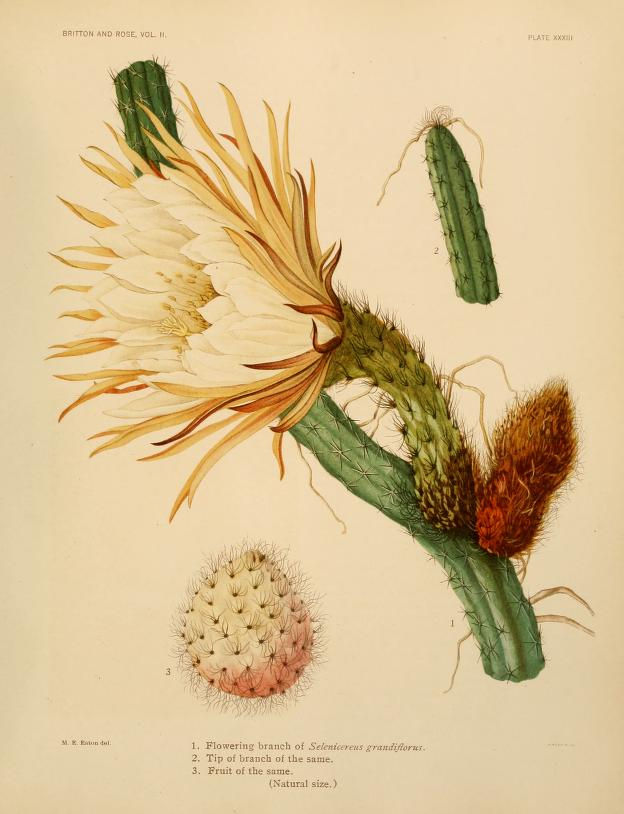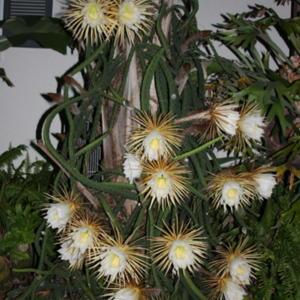It flowers once a year in the night
- rosemarydearman1
- Mar 5, 2019
- 3 min read

For March my lovely desk diary has a picture of the night blooming cereus - selenicereus grandiflorus. The painting is from The Temple of Flora by R. Thornton and was painted in 1807. It's very beautiful by the looks of things. But how would you know when it's going to flower?
I'm showing this because today I am feeling totally uninspired. I do actually have a lucky dip waiting and various other topics too, but some of them are likely to be lengthy and needing a bit more research, and I have to confess I'm feeling a bit lazy. So I turned to my strategy of inspiration from art. I had been rather struck by this when I turned the page to March - it was atmospheric in a Victorian kind of way. Sort of gothic romantic.
Anyway I looked it up, not expecting to be able to link to food very easily but, guess what? - it's near cousin is the plant that produces dragon fruit. and the plant in my picture also produces a fruit which can be eaten but is rather more difficult to get at and a bit less tasty I think. Difficult to get at because it's got spikes. Here are the two kinds.
I have often seen the dragon fruit in the market and in the supermarket even and wondered what they were and what you did with them. This is what I learnt.

They are both kinds of cactus from central America and the Caribbean.
So let's deal with the one in my picture first. It has been known about for a long time and although first described by Linnaeus in 1753 it had been long growing in the gardens at Hampton Court - as well as other places no doubt. And at the time it was thought to be the largest of the cactus flowers. I gather the flower can be dried and used for tea or in a soup - in China, and the fruit can indeed be eaten. The page for this week in my diary is decorated with half of the flower's petals. And below is an early botanical illustration of the plant.

As you can see it's a rather spindly kind of cactus. It is cultivated but you would sort of have to wonder why, unless you were a collector of such things. I mean if it only flowers once a year and then at night it's hardly going to be a real feature of your garden is it? Though I guess the fruit might be quite attractive. And did I say that it's common name is Queen of the Night or sometimes the Vanilla Cactus because it smells of vanilla.

Here it is in flower. Lots of flowers I guess.
It's related sort of cousin (hylocereus) is the one that is commercially grown and produces the dragon fruit, which I have to say is one of those spectacular kind of tropical fruits. I don't think this one can be such a rare flowerer because it seems that you can get the fruit most of the year. You can buy your own plant - well I suspect you can only grow it in the tropics. This is what it looks like:

There doesn't seem to be much that you can do with dragon fruit other than eat it. You cut it in half and scoop out the fruit, much like kiwi fruit. Once cut it doesn't keep for long, so eat it fresh.
And all that from a Victorian illustration.
















Comments